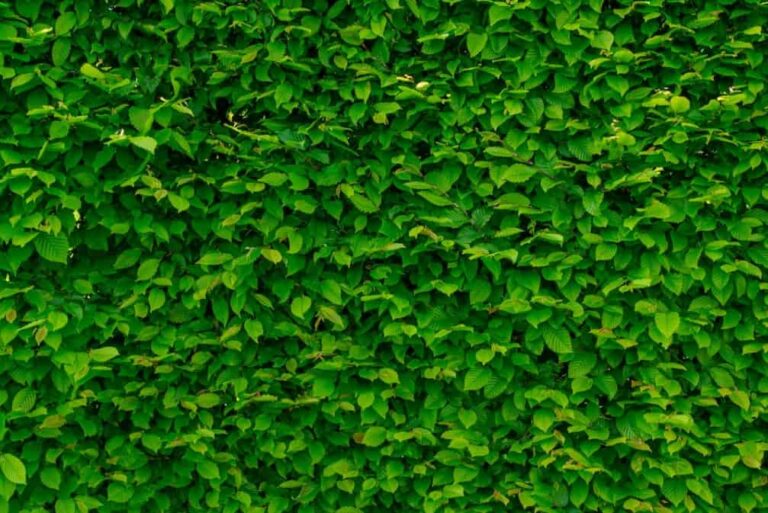Horns, braking, engine roars, high volumes in public places, stereos and TVs kept ‘on the blink’, thumps and screeches from various industrial and craft activities are our daily urban soundtrack.
We are victims of noise and we need a green acoustic barrier because, unfortunately, the noise in our cities is terribly bad for us.
Noise pollution is now recognised as a major environmental problem, as it deteriorates ecosystems and disturbs sleep and normal daily activities. But it is also the cause of a higher incidence of certain diseases, such as heart attacks, strokes, cardio-vascular problems, etc.
When it is not possible to intervene on the source of noise, there are natural elements, tall trees but not only, that limit the propagation of sound waves and protect our ears.
Table of Contents
What is a green noise barrier
There are numerous types of acoustic barriers and component materials, which are generally used to protect residential, sheltered or recreational areas from noise produced by roads, motorways, railways and industrial plants.
The choice of a product therefore depends not only on the required acoustic performance, but also on other factors such as statics, safety, aesthetics, durability, maintenance and cost.
In general, a distinction is made between artificial sound barriers (sound-insulating, sound-absorbing, or soundproofing and sound-absorbing) and natural (or green) sound barriers, which we will discuss here:
Protective vegetation belts
Crossing a vegetation belt (trees, bushes, tall grass), sound is forced to undergo a tortuous path that tends to degrade it into heat. The attenuation produced by natural barriers depends on the depth and height of the protective screen, the width and strength of the foliage, the density of the canopy and the duration of the foliage.
This contribute to the action of reducing noise pollution. Either by absorbing the waves directed at the ground, or by reflecting them with consequent loss of energy. Not forgetting the role of roots. Which ensure the correct porosity of the substrate, both in terms of sound absorption and water retention.
The plants of choice for natural barriers are evergreens with high foliage density and rapid growth, totally free of pathogens. As far as types are concerned, natural barriers can be divided into: vegetated enclosures, plant-covered embankments and mixed-structure barriers.
Vegetal wings
Vegetation enclosures are composed of a single row of trees of a single species or several varieties, shrubs and herbaceous plants with high resistance. Thus characterised by an arrangement of the leaves orthogonal to the direction of propagation of the noise. And by rapid growth until an optimal height is reached.
This type is among the best known and most widely used. But it requires a lot of space and entails rather high installation and maintenance costs. As well as a long time to reach full effect (at least 5 years). In terms of performance, barriers 4 m high and 8 m deep must be used to achieve abatements of approximately 10 dB (A).
Embankments with vegetation cover
Embankments with vegetation cover consist of linear accumulations of earth, appropriately stratified and planted with herbaceous and shrub species.
From a landscape and environmental point of view, they represent one of the most correct and acoustically functional systems. Even if they have the limitation of needing large spaces alongside the road infrastructure to be screened.
Read also: Urban greenery: how planting trees will save cities from rising temperatures
Mixed-structure screens
Finally, mixed-structure screens arise from the combination of plants with some artificial artefacts, which can also serve only as support.
Reinforced soils, biowalls, green walls, vegetative barriers and those consisting of geosacs fall into this category.
Reinforced earth
The reinforced soils, for example, are earth and stone embankments with a trapezoidal cross-section, stabilised with special metal grids and covered with vegetation.
This solution has a reduced economic-operational impact, given the prevalent use of material on site. And integrates perfectly into the context, taking on the appearance of a green cordon flanking the road infrastructure. Reinforced soil requires a minimum space of at least 2-3 metres and does not require any special maintenance.
Biomurals or sound-absorbing vegetation walls
Biomurals, on the other hand, consist of a combination of artificial structures with a load-bearing function (concrete, steel, plastic, wood). And fast-growing evergreen plants with a high density of foliage, fed by sophisticated growing substrates.
A biowall consists of different plant species on a wooden or concrete support structure and earth substrate.
Read also: Greenest cities in the world: 10 cities that made great efforts to become more eco-friendly












